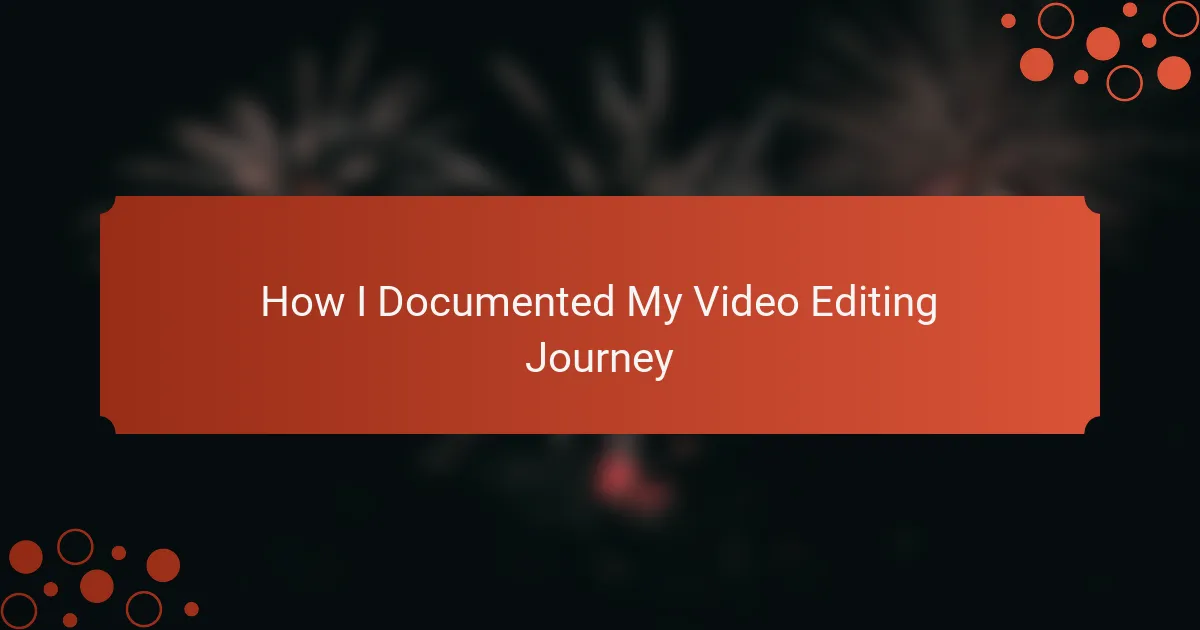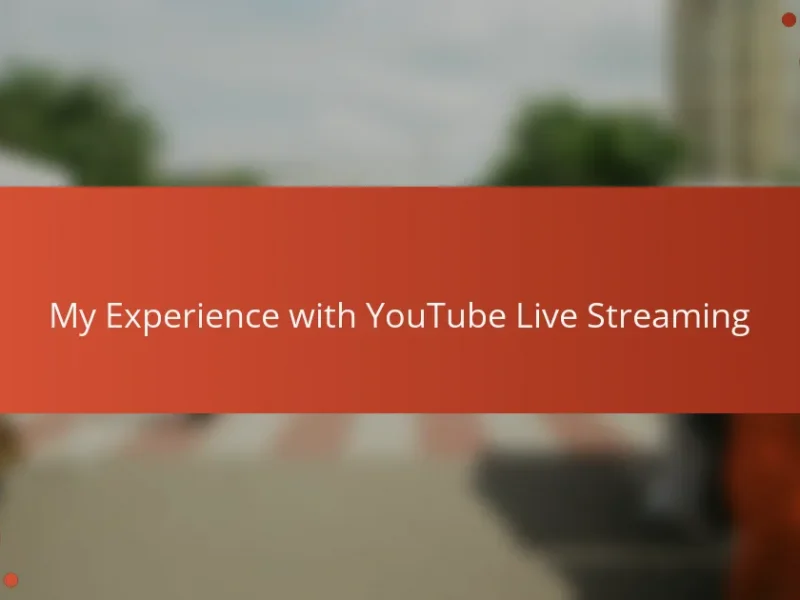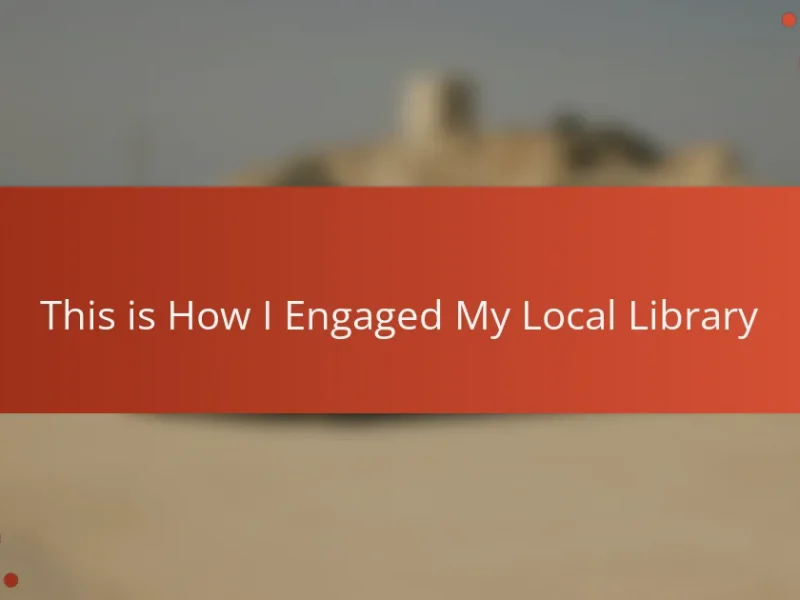Key takeaways
- Mastering basic editing techniques like cutting, trimming, and transitions is essential for building confidence and enhancing storytelling in videos.
- Choosing the right editing tools should align with personal goals and preferences, focusing on what inspires creativity rather than just features.
- Capturing and documenting the editing process helps in recognizing progress, staying engaged, and fostering a dialogue about creative decisions.
- Receiving and incorporating feedback from others accelerates growth and improvement, while continuous practice cultivates both technical skills and creative instincts.
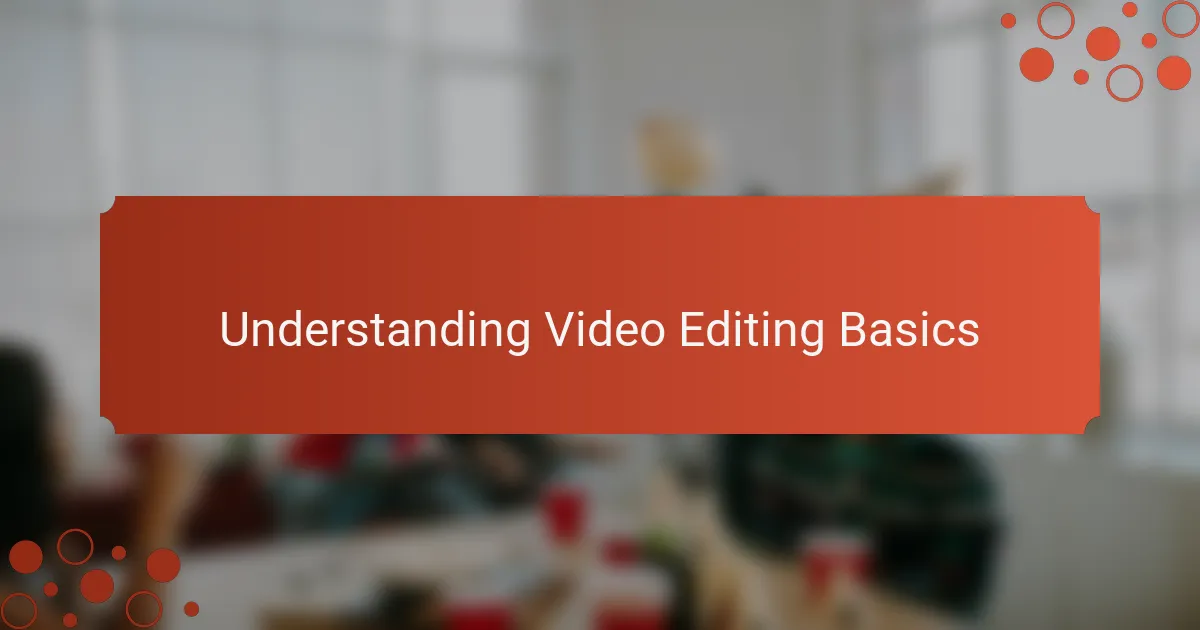
Understanding Video Editing Basics
When I first opened my video editing software, the sheer number of tools and options felt overwhelming. But I quickly learned that understanding the basics—like cutting, trimming, and arranging clips—was the foundation everything else was built on. Have you ever felt that mix of excitement and confusion staring at a blank timeline? That’s exactly where my journey began.
Learning how to work with transitions and simple effects made a huge difference for me. It’s amazing how a well-placed fade or a smooth cut can completely change the storytelling flow. I remember the first time I successfully synced audio with video; it was like cracking a secret code that brought my project to life.
Another key moment was grasping the importance of color correction and audio balancing. These details might seem small at first, but they truly elevate the final product and keep viewers engaged. Reflecting on those early edits, I realize how much mastering these basics shaped my confidence and enthusiasm for video editing.
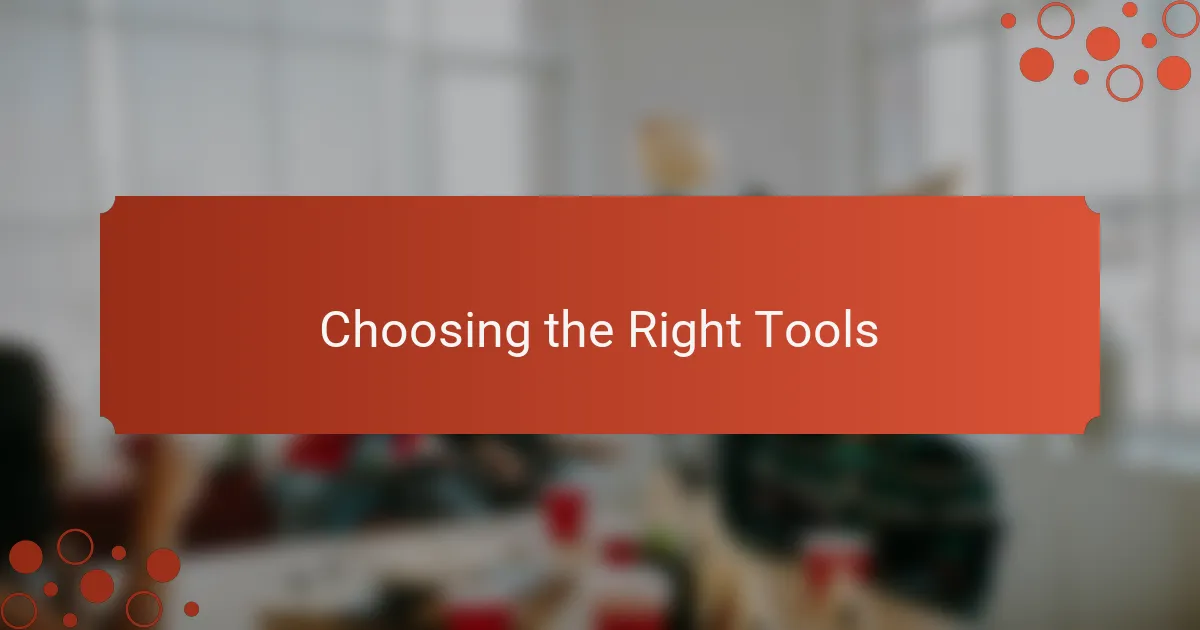
Choosing the Right Tools
Choosing the right tools felt like trying to find my way in a dense forest without a map. I had so many options—free apps, professional software, plugins—and it was easy to doubt if I was picking the best fit. Have you ever hesitated over buying a program or sticking with something basic because the price or learning curve seemed daunting?
What helped me was narrowing down my needs based on my video goals and the type of content I wanted to create. For example, I realized I didn’t need the most expensive software right away; instead, I needed something intuitive that allowed me to experiment and grow. This mindset saved me from overwhelm and gave me space to focus on creativity, not just technicalities.
Over time, I added tools that complemented my workflow, like specialized audio editing plugins or color grading presets. Each new addition felt like a small victory—a way to push my videos from “okay” to “wow.” I’ve found that choosing tools isn’t just about features; it’s about how they inspire and support you on your editing journey.
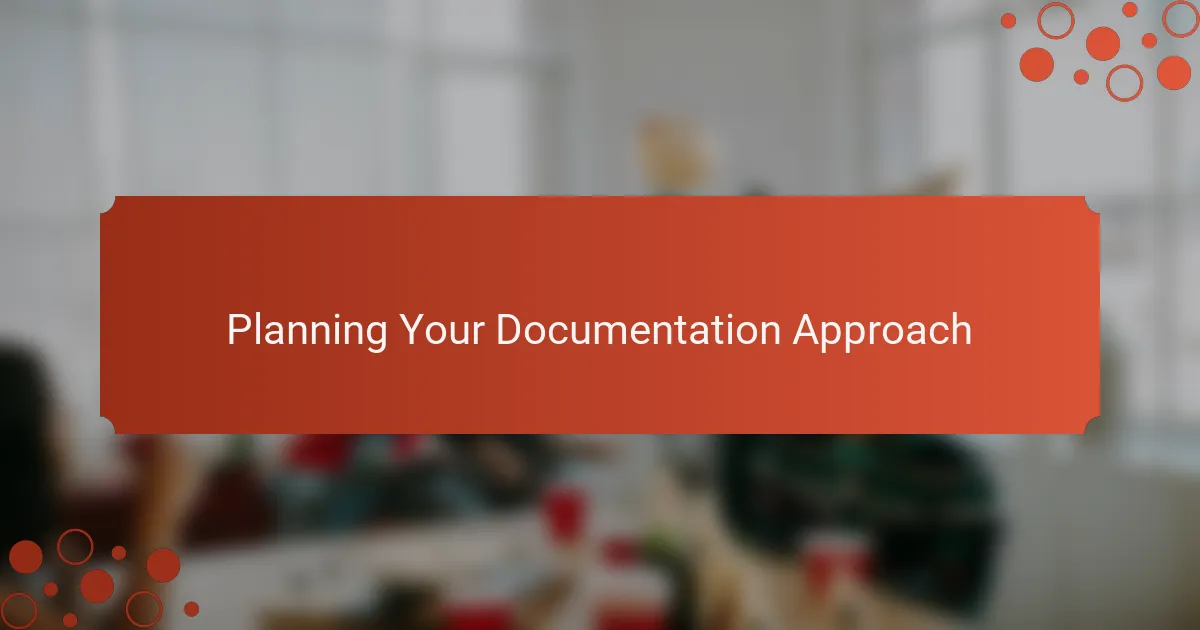
Planning Your Documentation Approach
Planning my documentation approach felt almost like sketching a road map before a long trip. I asked myself, what stories do I want to tell about my editing progress? Deciding this early gave me a clear focus and made capturing the right moments feel purposeful rather than random.
I also debated how detailed I should be—should I jot down every small fix or just highlight major breakthroughs? In the end, striking a balance worked best for me. Too much detail became tedious, but too little left gaps that didn’t fully show my growth. Finding that sweet spot helped my documentation stay both informative and enjoyable to revisit.
Another thing I learned was to choose the format that matched my lifestyle and workflow. Whether it was quick video clips, written notes, or screenshots, having a consistent method made looking back feel organized, not overwhelming. Have you ever tried documenting something but gave up because it became too complicated? Keeping it simple was key for me to stay motivated throughout the process.
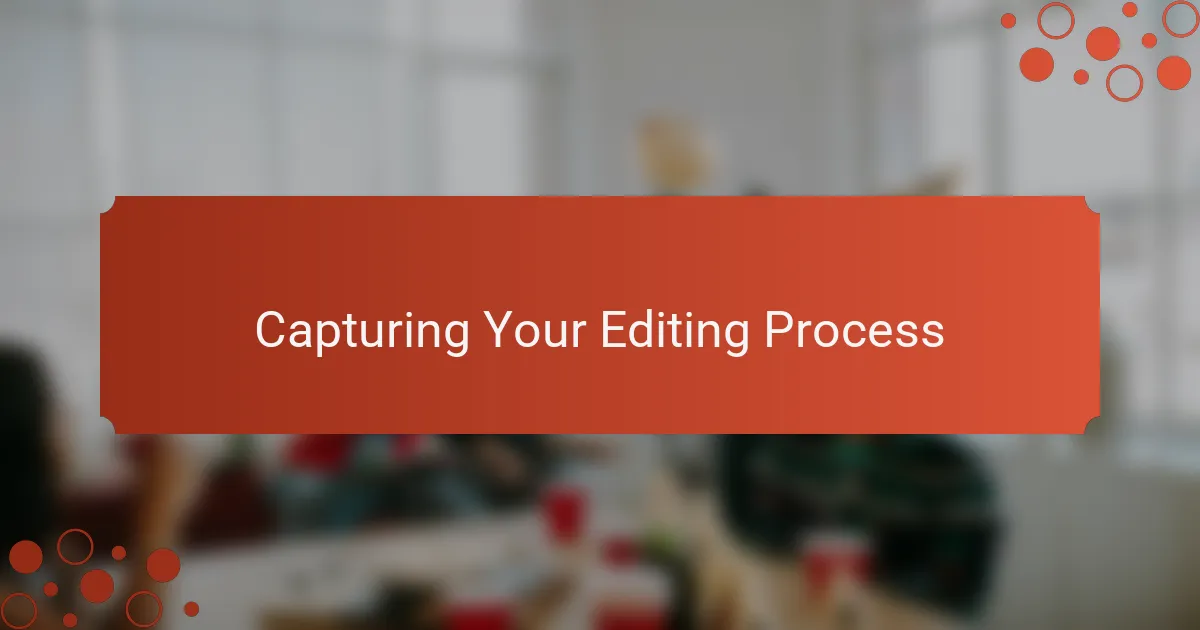
Capturing Your Editing Process
Capturing your editing process became a way for me to see progress in real time, especially when the final video still felt far away. I started recording short clips of my screen during tricky edits, and watching those moments later gave me a surprising boost of motivation. Have you ever watched yourself struggle through a problem only to realize how much you’ve improved?
Sometimes, I’d jot down quick thoughts about why I made certain cuts or chose a particular effect. Those little notes became a fascinating peek into my creative decisions and helped me troubleshoot when something didn’t feel quite right. It turned documentation from a chore into an ongoing conversation with myself.
The key, I found, was consistency—not perfection. Even on days when my edits felt messy or incomplete, capturing the process kept me engaged and accountable. It’s amazing how just hitting ‘record’ or opening a note can transform your relationship with the craft itself.
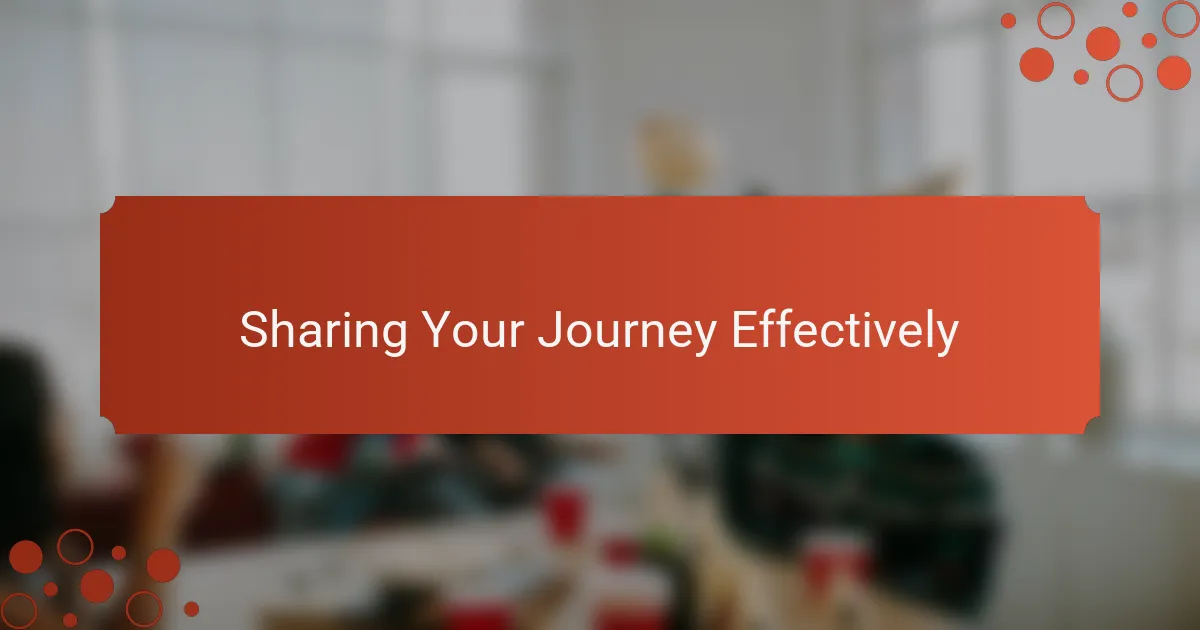
Sharing Your Journey Effectively
Sharing your journey effectively is all about finding the right balance between honesty and inspiration. I realized early on that being open about my struggles made my story relatable, while celebrating small wins kept me motivated and connected with others. Have you noticed how people gravitate toward authenticity more than polished perfection? That’s definitely been true in my experience.
Another thing that shaped my approach was choosing the right platforms to share on. Sometimes, short, punchy updates on social media sparked conversations, while deeper reflections on a blog allowed me to unpack lessons learned in detail. I found that tailoring my message to the audience’s expectations made my journey feel engaging rather than just another checklist.
Finally, I discovered that involving others in my progress created a powerful feedback loop. Sharing clips and asking for opinions not only improved my work but also made me feel part of a supportive community. Isn’t it amazing how sharing your process can transform a solo struggle into a shared adventure? That’s the kind of connection that keeps me coming back to video editing, time and again.
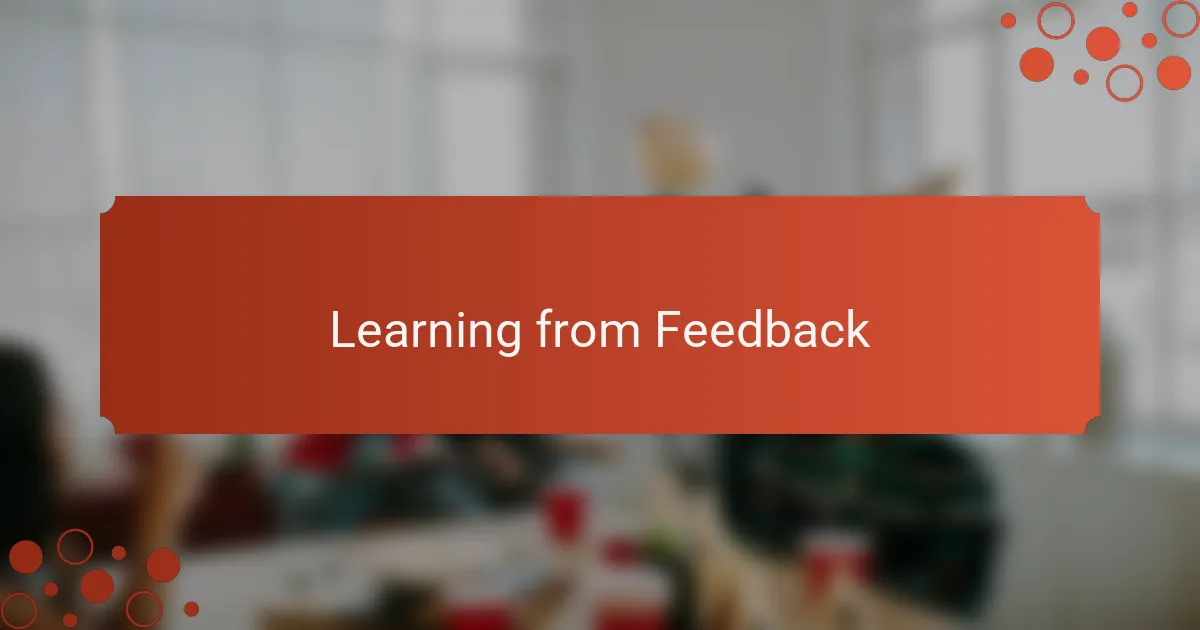
Learning from Feedback
When I first started sharing my edits, feedback felt like a double-edged sword—exciting yet sometimes intimidating. Have you ever hesitated after receiving a critique, wondering if your work was good enough? What helped me was shifting my mindset to see feedback as a valuable guide, not a judgment.
I learned to listen carefully, even to criticism that initially stung. Some comments pointed out small details I’d overlooked, like uneven cuts or awkward transitions, which made me realize that improving those tiny things could elevate the entire video. It’s incredible how fresh eyes can reveal what we miss when we’re too close to our own work.
Over time, incorporating feedback became a dialogue rather than a one-way street. I started asking specific questions like, “Does this part feel too slow?” or “Is the audio clear enough here?” Getting targeted responses helped me focus my efforts where they mattered most. Isn’t it amazing how learning from others can accelerate your growth far beyond what you achieve alone?
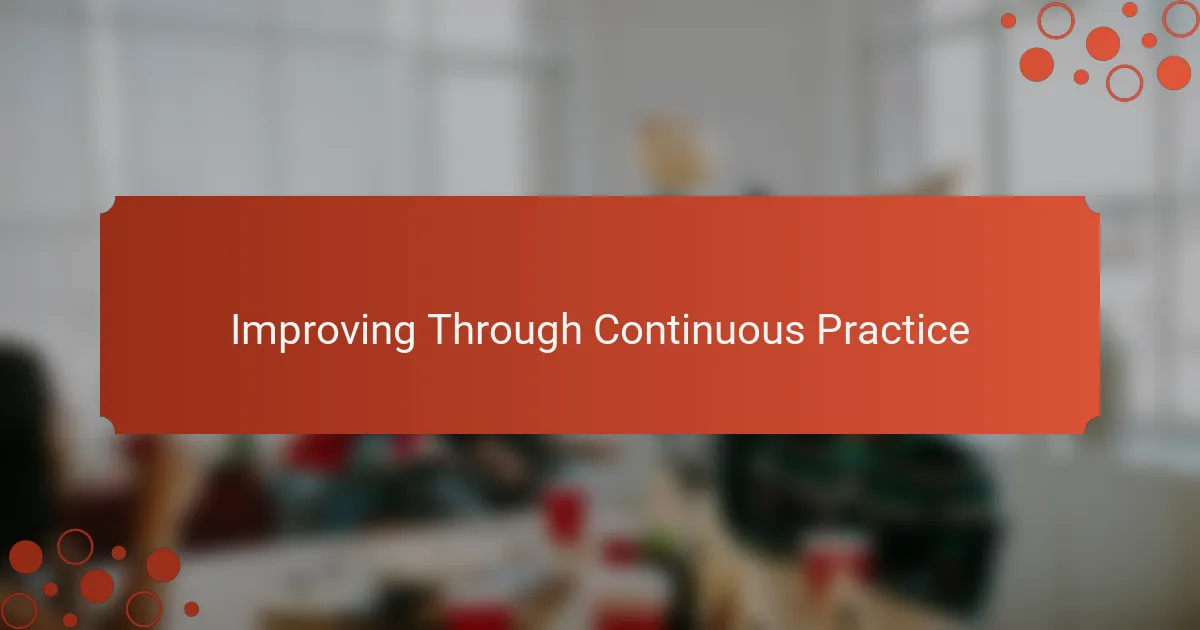
Improving Through Continuous Practice
There were days when I felt stuck, convinced my editing skills hadn’t improved despite countless hours at the timeline. But looking back, those moments of repetition—cutting, tweaking, rewatching—were actually the building blocks of my progress. Have you ever noticed how something that feels tedious at first suddenly becomes second nature with enough practice?
I found that the key wasn’t just practicing blindly but consistently challenging myself with new techniques or styles. For example, trying out a complex transition or tackling color grading on a different video pushed me beyond my comfort zone. Each time, even when the result wasn’t perfect, I learned something valuable that deepened my understanding.
What surprised me most was how continuous practice didn’t just polish my technical skills but also shaped my creative instincts. With every edit, I became more confident in spotting what a scene needed emotionally and visually. That ongoing cycle of doing, reflecting, and refining turned video editing from a daunting task into an exciting craft I wanted to keep improving every single day.
